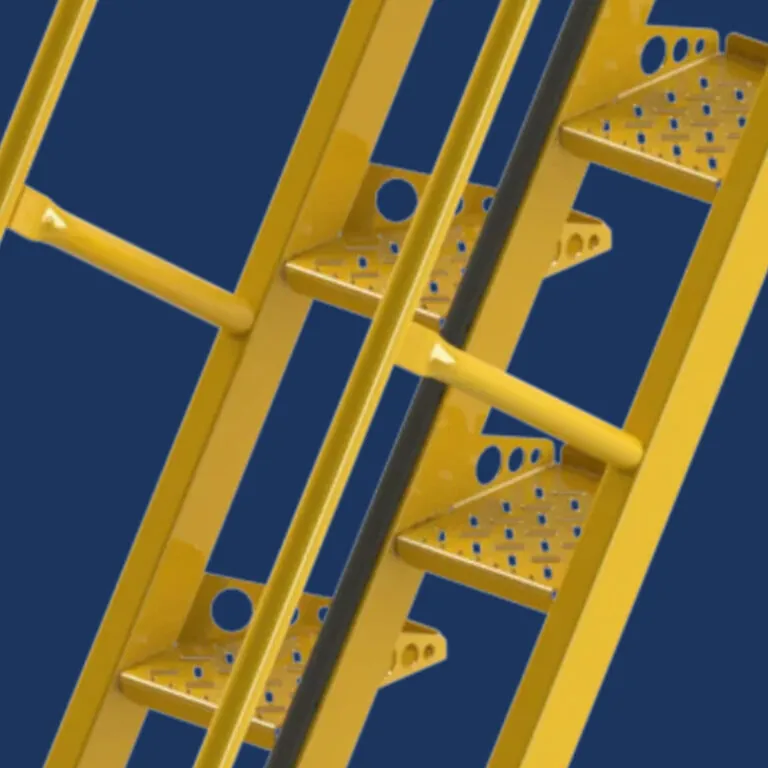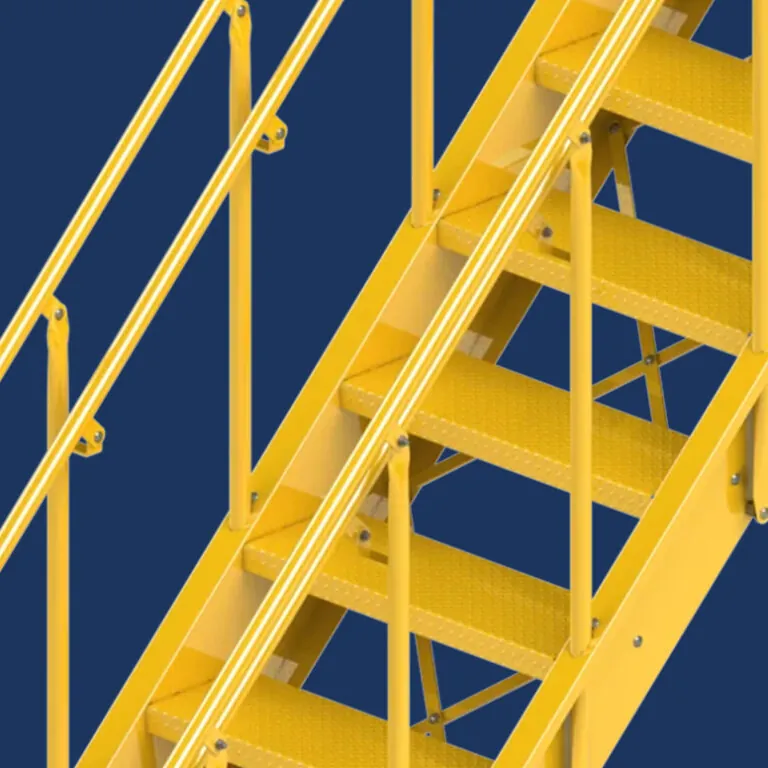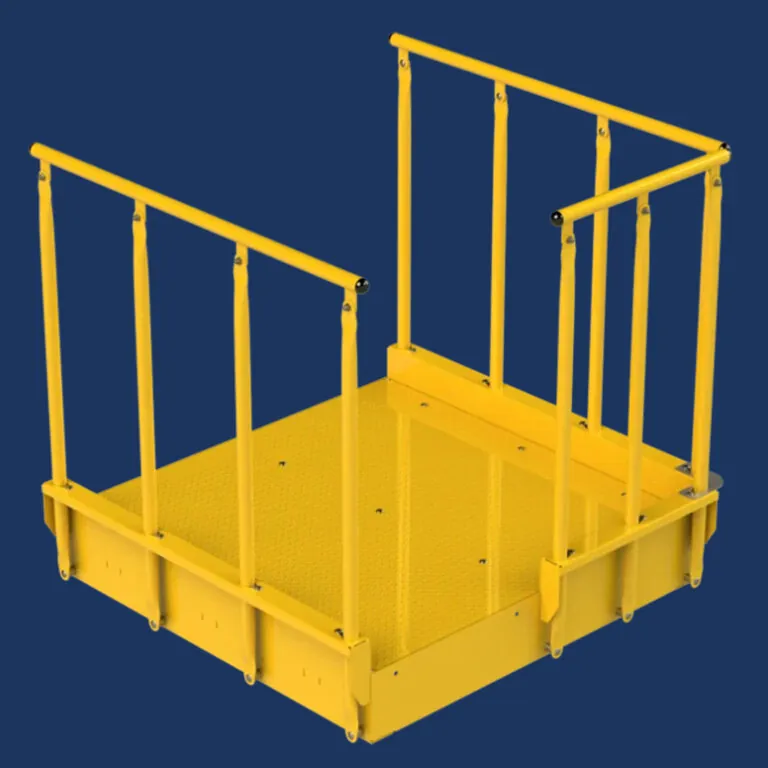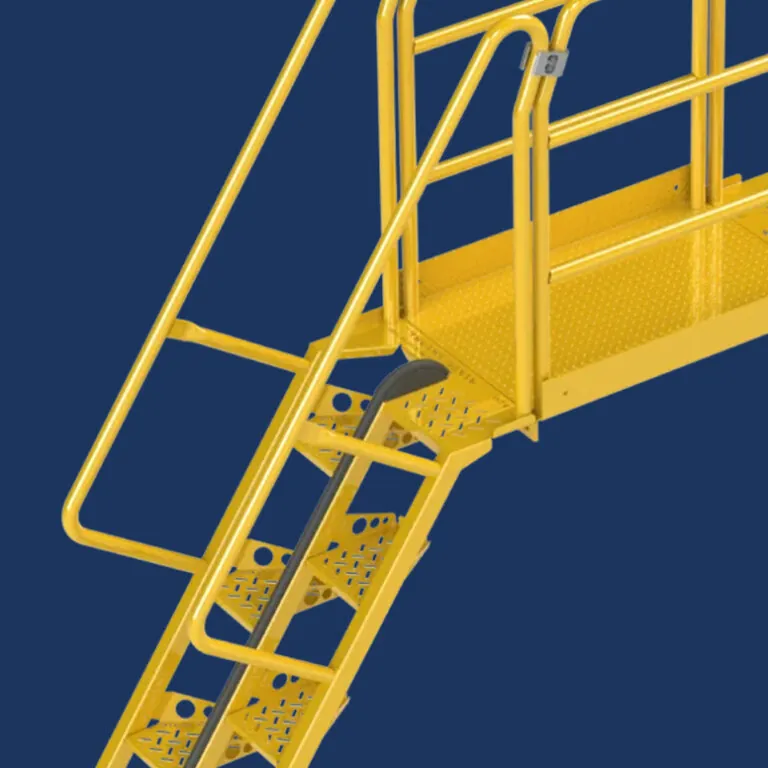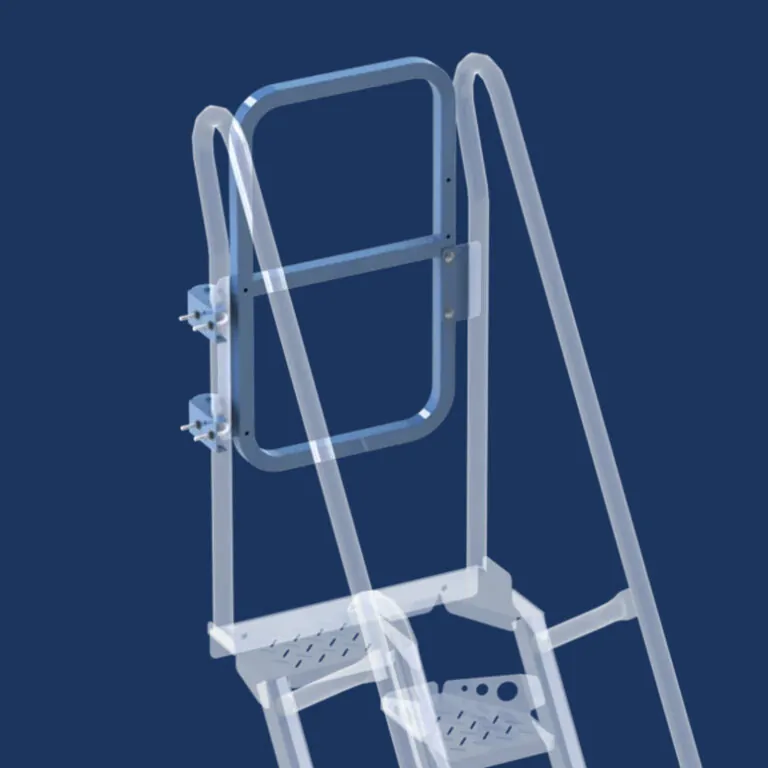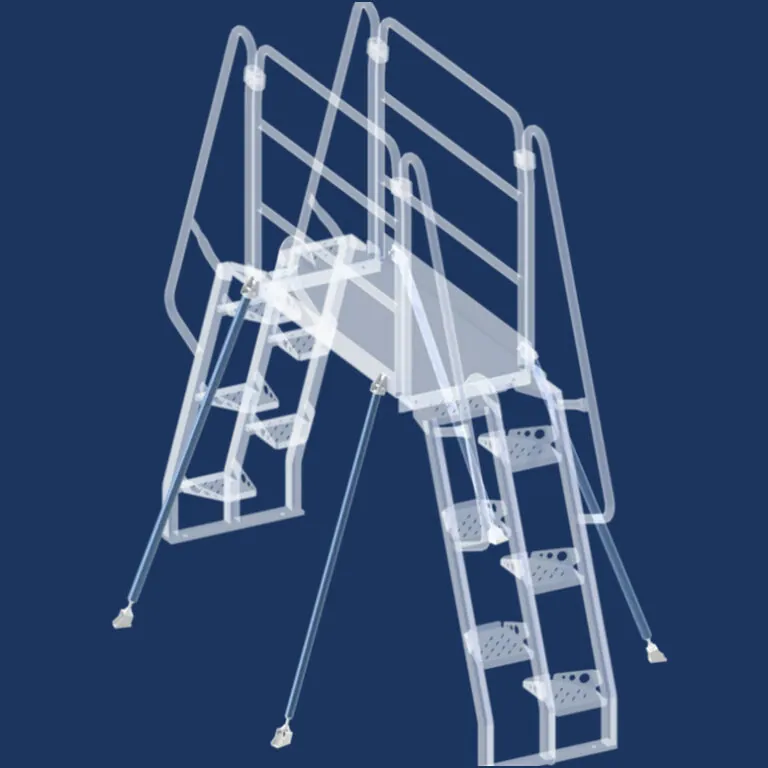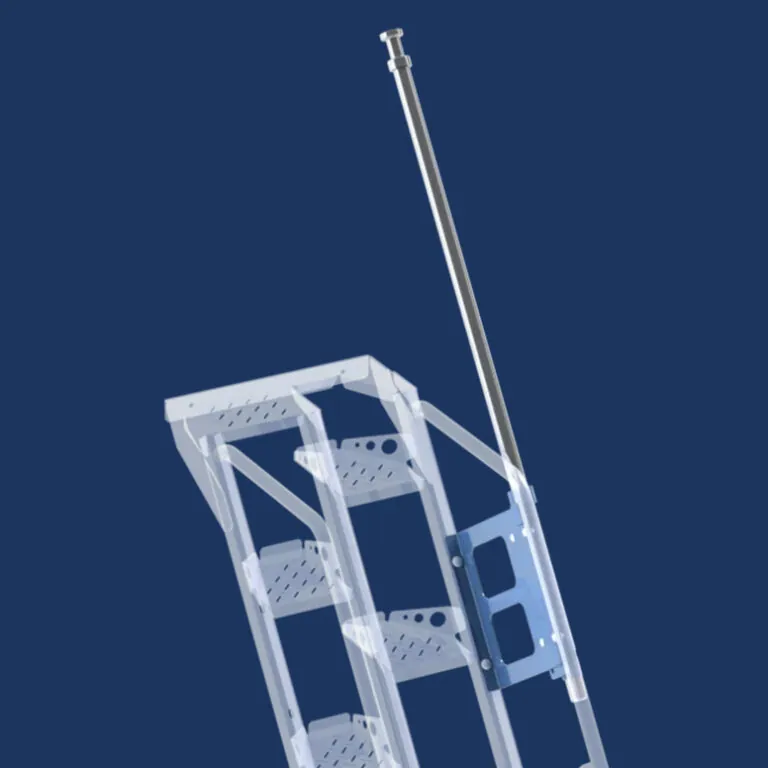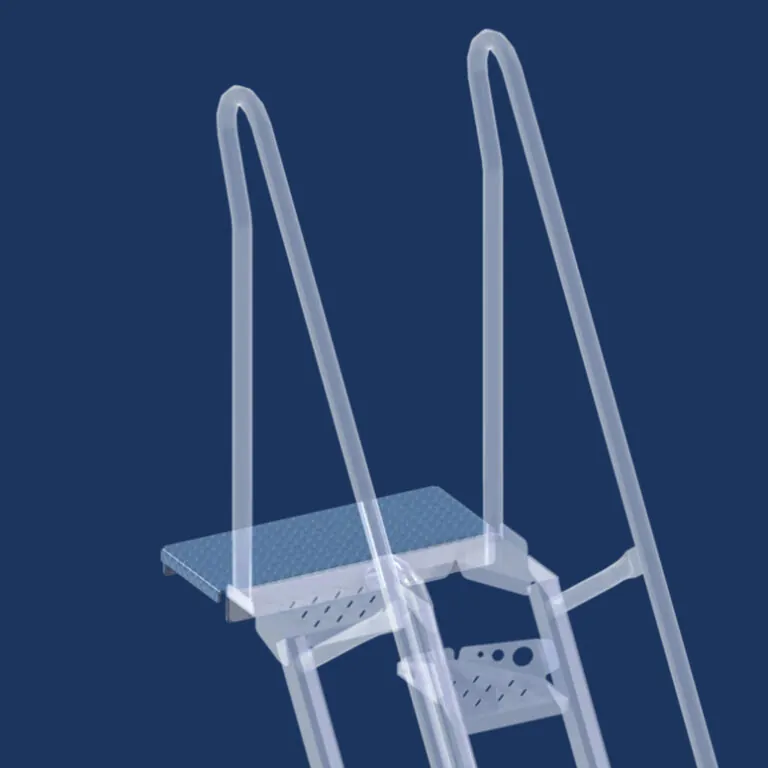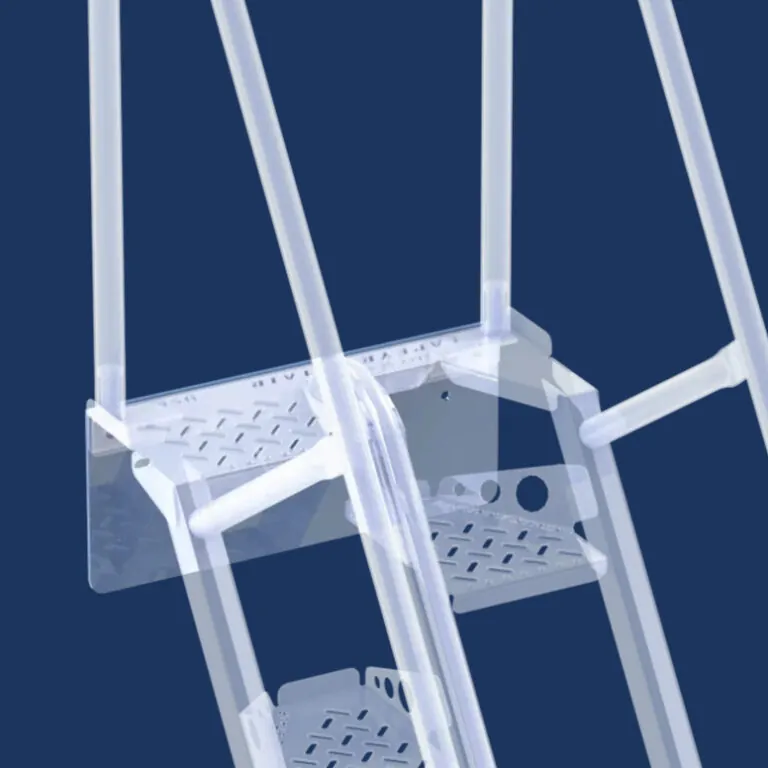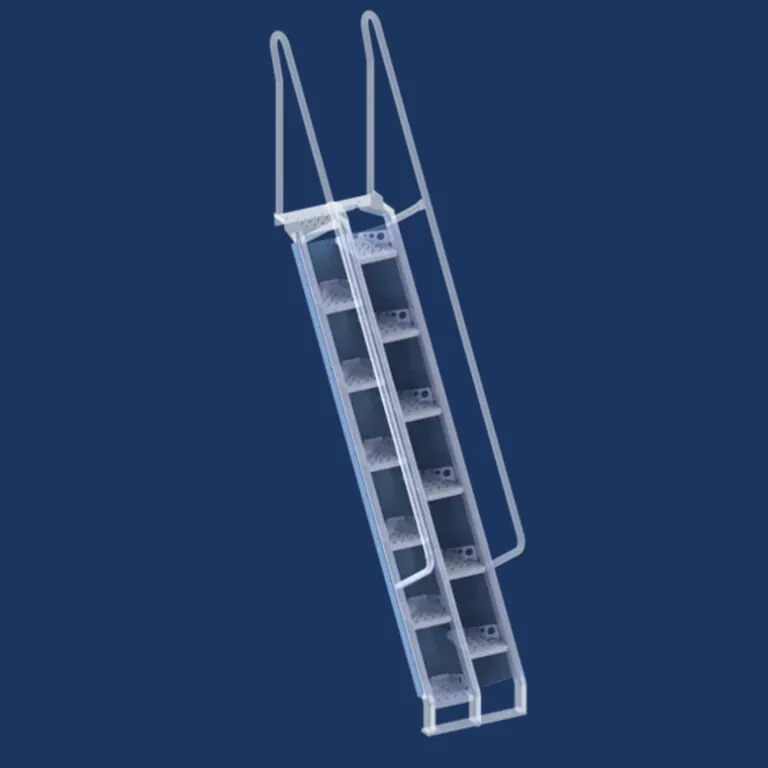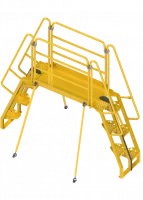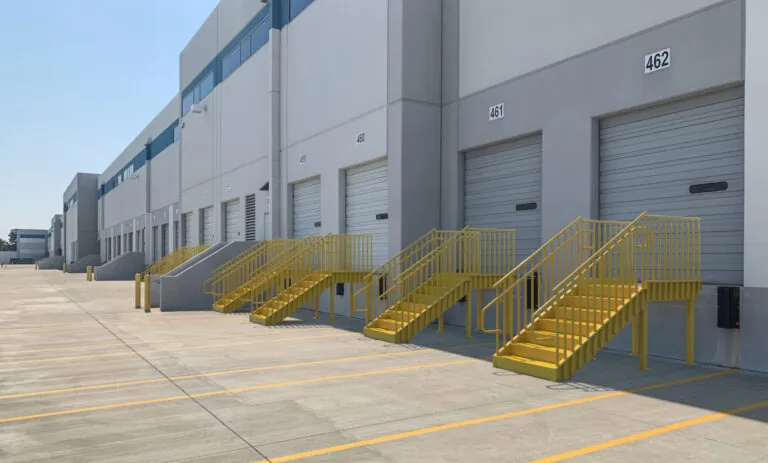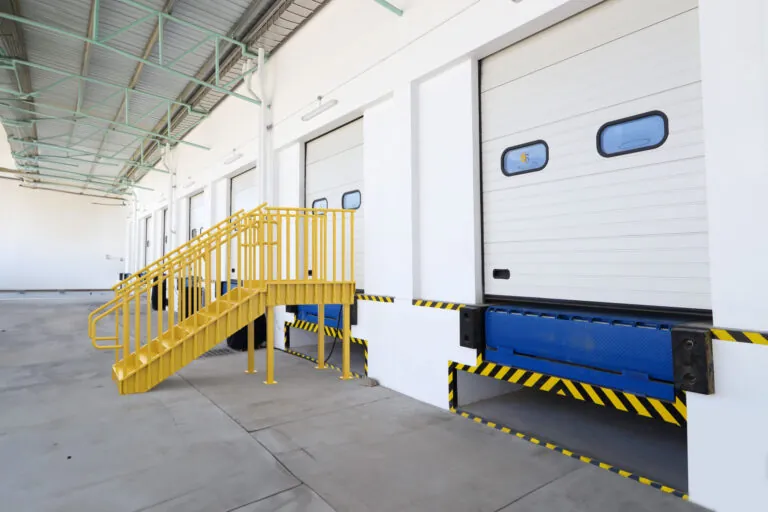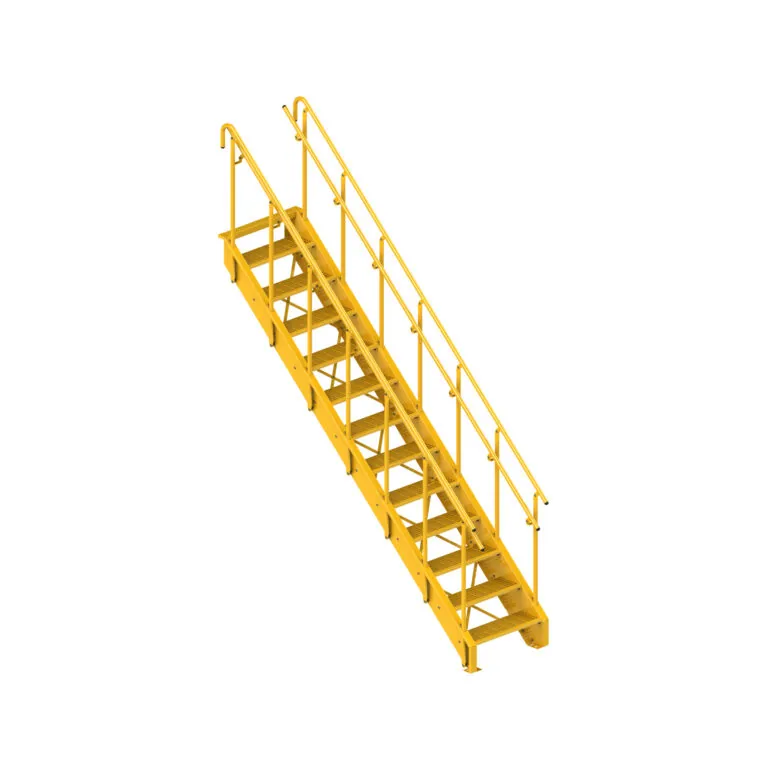In the dynamic landscape of industrial environments, safety and efficiency are paramount. Industrial spaces often demand specialized infrastructure to ensure smooth operations and safeguard workers. Among these vital structures, industrial stairs stand as essential pathways to facilitating vertical movement. Industrial metal stairs are used for anything from equipment or mezzanine access to loading dock or egress stairs. Each design serves a specific purpose dictated by the unique needs of the customer. Understanding the critical requirements of industrial stairs is key to optimizing functionality and enhancing workplace safety.
Structural Integrity
Industrial environments often entail heavy foot traffic and the transportation of equipment and materials. Therefore, structural integrity is critical when it comes to industrial stairs. Galvanized and powder-coated steel are popular choices due to their corrosion resistance and durability. These materials can withstand significant loads and provide long-term reliability, essential for ensuring worker safety even in challenging environmental conditions.
Compliance with Safety Regulations
Adherence to safety regulations is imperative in industrial settings. Industrial stairs must comply with relevant safety standards to mitigate the risk of accidents and injuries. Whether it’s OSHA (Occupational Safety and Health Administration) guidelines or industry-specific regulations, all requirements must be met to guarantee a safe working environment. All industrial metal stairs should be designed with appropriate tread dimensions, handrails, and anti-slip surfaces to minimize the potential for falls.
Customization for Specific Applications
Industrial environments vary greatly, and a one-size-fits-all approach to stair design simply won’t suffice. Custom staircase solutions allow for tailored designs that meet the unique requirements of each setting. Whether it’s a platform stairs configuration for accessing machinery or a specialized industrial staircase for navigating confined spaces, customization ensures optimal functionality and safety.
Ergonomic Design
Efficient vertical movement is essential in industrial operations. Therefore, industrial stairs must be designed with ergonomics in mind. Comfortable tread dimensions, appropriate rise and run ratios, and well-positioned handrails contribute to ease of use and reduce the risk of fatigue or strain on workers. Alternating tread stairs, which can be a great alternative when space is at a premium, also increase user safety and comfort.
Corrosion Resistance
Many industrial environments expose stairs to harsh conditions, including moisture, chemicals, and extreme temperatures. Corrosion-resistant materials such as stainless steel or galvanized steel are essential for ensuring the longevity of industrial staircases. By resisting corrosion, these materials help maintain the structural integrity of the staircase, reduce maintenance requirements and extend the lifespan of the stairs.
Easy Maintenance
Minimizing downtime is crucial in industrial operations, making maintenance-friendly designs a priority for industrial stairs. Stair components should be easily accessible for inspection and maintenance tasks. Additionally, materials and finishes should be selected to facilitate simple cleaning and upkeep, ensuring that stairs remain in optimal condition with minimal disruption to workflow.
Integration with Existing Infrastructure
In many cases, industrial stairs need to seamlessly integrate with existing structures and equipment. Whether it’s replacing a ladder with stairs or incorporating alternating tread stairs into a confined space, careful planning and precise engineering are required to ensure compatibility and functionality. Integration considerations extend beyond physical dimensions to encompass factors such as load-bearing capacity and workflow efficiency.
Load-Bearing Capacity
Industrial environments often involve the movement of heavy equipment and materials. Stairs must be capable of supporting significant loads without compromising safety or stability. Load calculations should account for both static and dynamic loads, ensuring that the stairs remain structurally sound under all operating conditions. Industrial staircases should be engineered to meet or exceed required load-bearing standards to guarantee worker safety.
Conclusion
Industrial stairs play a crucial role in facilitating vertical movement and ensuring workplace safety in industrial environments. From standard industrial metal stairways to custom staircase solutions, each design must meet critical requirements to withstand the demands of industrial operations. By prioritizing structural integrity, compliance with safety regulations, customization, ergonomic design, corrosion resistance, easy maintenance, integration with existing infrastructure, and sufficient load-bearing capacity, industrial stairs can effectively support productivity while safeguarding the well-being of workers. Investing in high-quality industrial stair solutions is not only a matter of regulatory compliance but also a proactive measure to enhance operational efficiency and mitigate risks in industrial settings.

